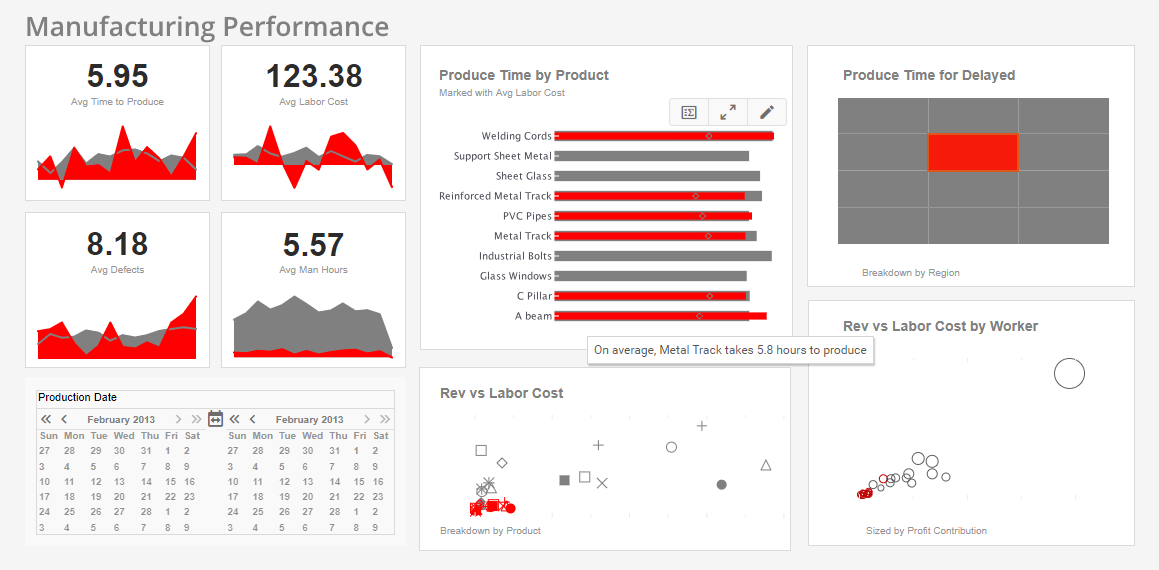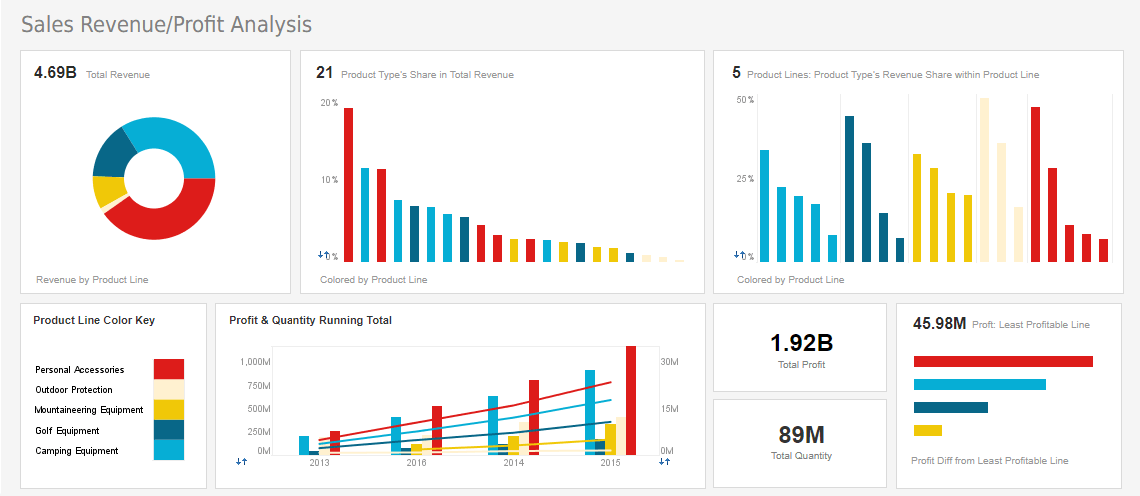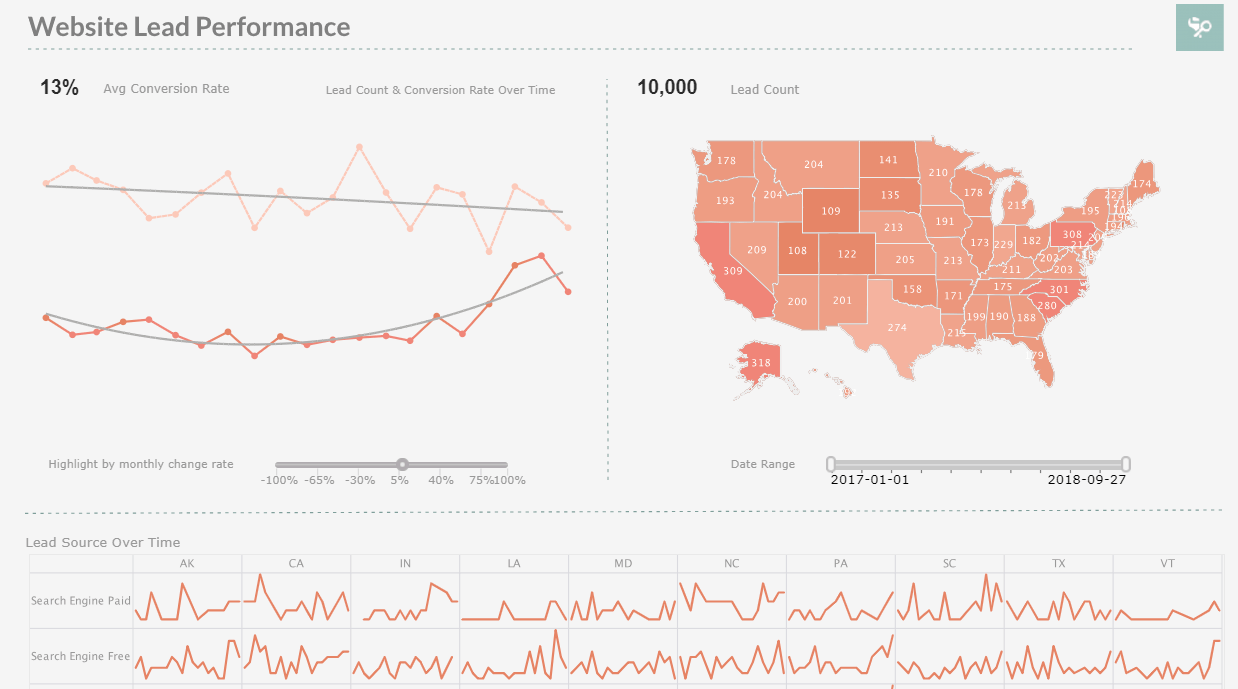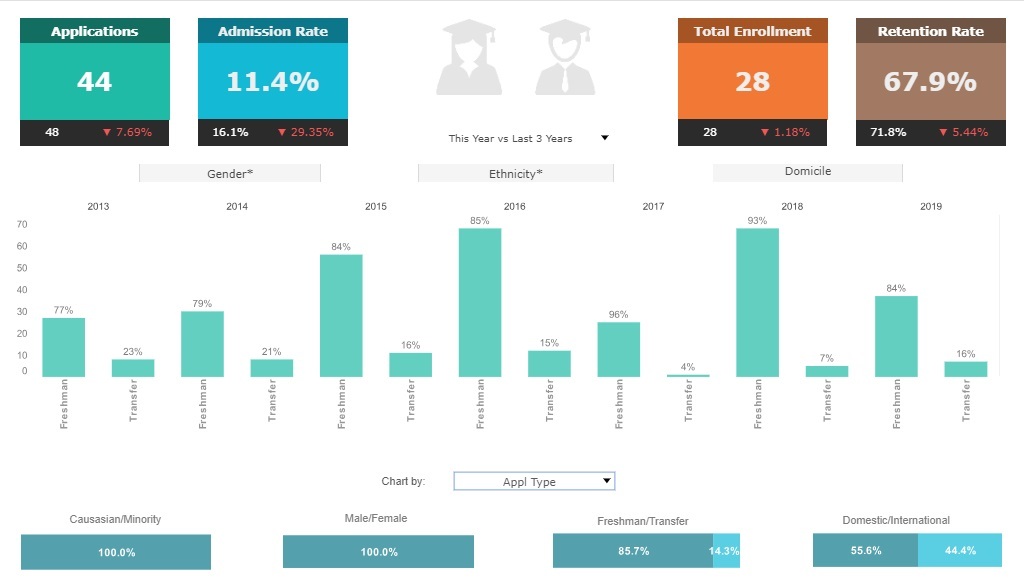Best Business Reporting Tool in 2025
To be considered the best, what key qualities do you look for in reporting tools? Is it the cost? Maybe the functionality? Perhaps the available options? InetSoft specializes in providing businesses and organizations with reporting tools that cater to the needs of the users whether it be through the vast tools, friendly user-experience, and/or competitive pricing.
At InetSoft, we offer multiple reporting solutions that service users' wants and needs with added flexibility to create the perfect report deliverables.
While maintaining industry standards, our solutions for your reporting problems are carried out by powerful authoring tools to manage business logic, manipulate data, and present information clearly and effectively.
With our Style Report™ Enterprise, web-based software, we equip users with a one-of-a-kind experience, topped off with production reports, interactive reports, and ad hoc reports in a zero-client, Web environment. If your company is looking for ad hoc reporting, J2EE reporting, and Web based reporting, Style Report™ is the perfect solution for you.
Want to learn more? Contact us for more information and we'll make sure to guide you along the right path.
| #1 Ranking: Read how InetSoft was rated #1 for user adoption in G2's user survey-based index | Read More |
Enterprise Reporting
InetSoft allows both IT and business users to work cohesively with authoring tools in a highly scalable deployment environment.
Our dynamic reporting software is capable of on-demand, interactive reporting and scheduling, bursting, and archiving of reports. These features are integrated innovatively into our professional authoring tool. This tool combines the power of word-processing grade design with dynamic data manipulation allowing the creation of sophisticated reports from the simple interface of the software.
In addition to the report authoring tool, we have incorporated an ad hoc query and reporting feature to our enterprise software. Business reporting software users are empowered with the ability to create both data-focused ad hoc queries and presentation-focused ad hoc reports. Ultimately, the combination of the two compliments your ability to analyze data and make better business decisions.
Embedded Report Engine
For original equipment manufacturers (OEM), we provide embeddable, easy-to-use tools made possible by InetSoft's SOA and Java architecture, small footprint, and open standards-based technology. Having the luxury of an easily embeddable engine onto a Java-based Web or desktop application reduces data query and manipulation complexity, direct XML, Javascript and Java skills, lower maintenance and management costs, and most importantly deliver high quality reports and presentations.
Customer Testimonial
"We selected InetSoft for a time-tested, dependable publishing engine and a powerful, yet easy-to-use report designer that would save resources associated with internal development of publishing capabilities and client customization requests. We were looking for a Java-based publishing solution that could be easily integrated with our own. We have been pleased with deployment, and the reporting software’s part in our ability to help companies of all sizes realize cost reduction and revenue acceleration associated with critical configuration and accurate quoting solutions."
What Does the Director of a Social Welfare Program Track Using a Reporting Tool?
The Director of a Social Welfare Program typically tracks a wide range of metrics and data points using a reporting tool to ensure the effective delivery of services, monitor program performance, and make informed decisions. Here are several key areas that the Director may focus on:
- Client Demographics and Caseload Management:
- Tracking demographic information such as age, gender, ethnicity, and socioeconomic status of program participants.
- Monitoring caseload size and caseload distribution among staff to ensure workload balance and efficient service delivery.
- Service Utilization and Outcome Measures:
- Recording the types and frequency of services provided to clients, such as counseling, financial assistance, housing support, healthcare, etc.
- Tracking outcome measures such as improvements in clients' well-being, increased self-sufficiency, employment status, housing stability, and overall satisfaction with services received.
- Program Efficiency and Effectiveness:
- Monitoring wait times for services, appointment scheduling, and service delivery times to ensure timely access to assistance.
- Assessing program efficiency by tracking the ratio of staff-to-client caseloads, average duration of client engagement, and resource utilization.
- Compliance and Regulatory Reporting:
- Ensuring compliance with regulatory requirements and reporting obligations, including adherence to funding guidelines, program standards, and legal mandates.
- Generating reports for external stakeholders, funders, and regulatory agencies to demonstrate program effectiveness and accountability.
- Financial Management and Budget Monitoring:
- Tracking program expenditures, budget allocations, and funding sources to ensure financial sustainability and accountability.
- Monitoring cost-effectiveness and resource utilization to identify areas for optimization and budget reallocation.
- Staff Performance and Training Needs:
- Evaluating staff performance metrics such as caseload management, client satisfaction ratings, and adherence to program protocols.
- Identifying training needs and professional development opportunities for staff to enhance skills and competencies in delivering effective services.
- Community Engagement and Collaboration:
- Monitoring community outreach efforts, partnerships, and collaborations with other agencies, nonprofits, and stakeholders.
- Tracking participation in community events, workshops, and forums to promote awareness of available services and resources.
- Quality Improvement and Risk Management:
- Implementing quality assurance measures and performance improvement initiatives based on data-driven insights and feedback from clients and stakeholders.
- Identifying and mitigating risks related to program operations, service delivery, compliance, and client outcomes.
More Articles About Program Reporting
Aviation KPI On-Time Performance (OTP) - One of the most important KPIs on aviation dashboards is On-Time Performance (OTP). The OTP calculates the proportion of flights that take off and land on schedule. Airlines keep a tight eye on this indicator in order to meet regulatory requirements, improve customer happiness, and schedule crews as efficiently as possible. Aviation personnel may detect patterns, identify operational bottlenecks, and take proactive steps to reduce delays with the help of real-time OTP analytics...
Output Components for Dashboards - Graphical output components display summarized data using a familiar measurement device (Gauge, Cylinder, Thermometer, Sliding Scale, etc.). The highly graphical nature of these objects makes them ideal candidates for presenting key indicators. Like data views, graphical output components are controlled by selection and input components...
Tool to Make Waterfall Charts Online for Free - To easily and quickly create Waterfall Charts online for free, create a Free Individual Account on the InetSoft website. You will then be able to upload a spreadsheet data set. Once you have done that, you will be able to proceed past the Visualization Recommender, which can usually get you started creating a dashboard. Since the Recommender does not offer the Waterfall Chart...
What is a Dashboard Used For? - Dashboard software is used by executives, managers, analysts and frontline business users for monitoring, reporting, and analysis. Dashboards for different business purposes are commonly created for different target audiences...







